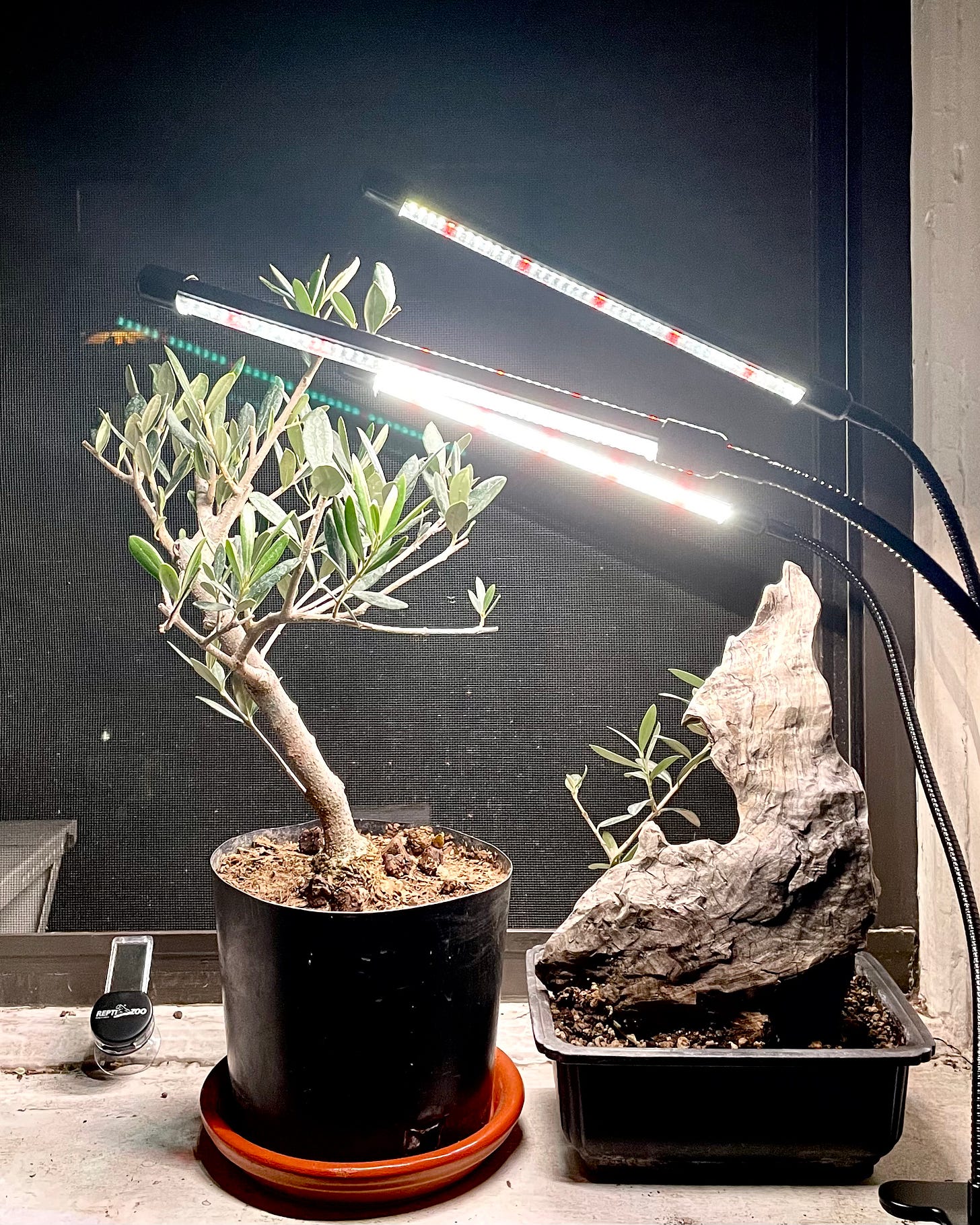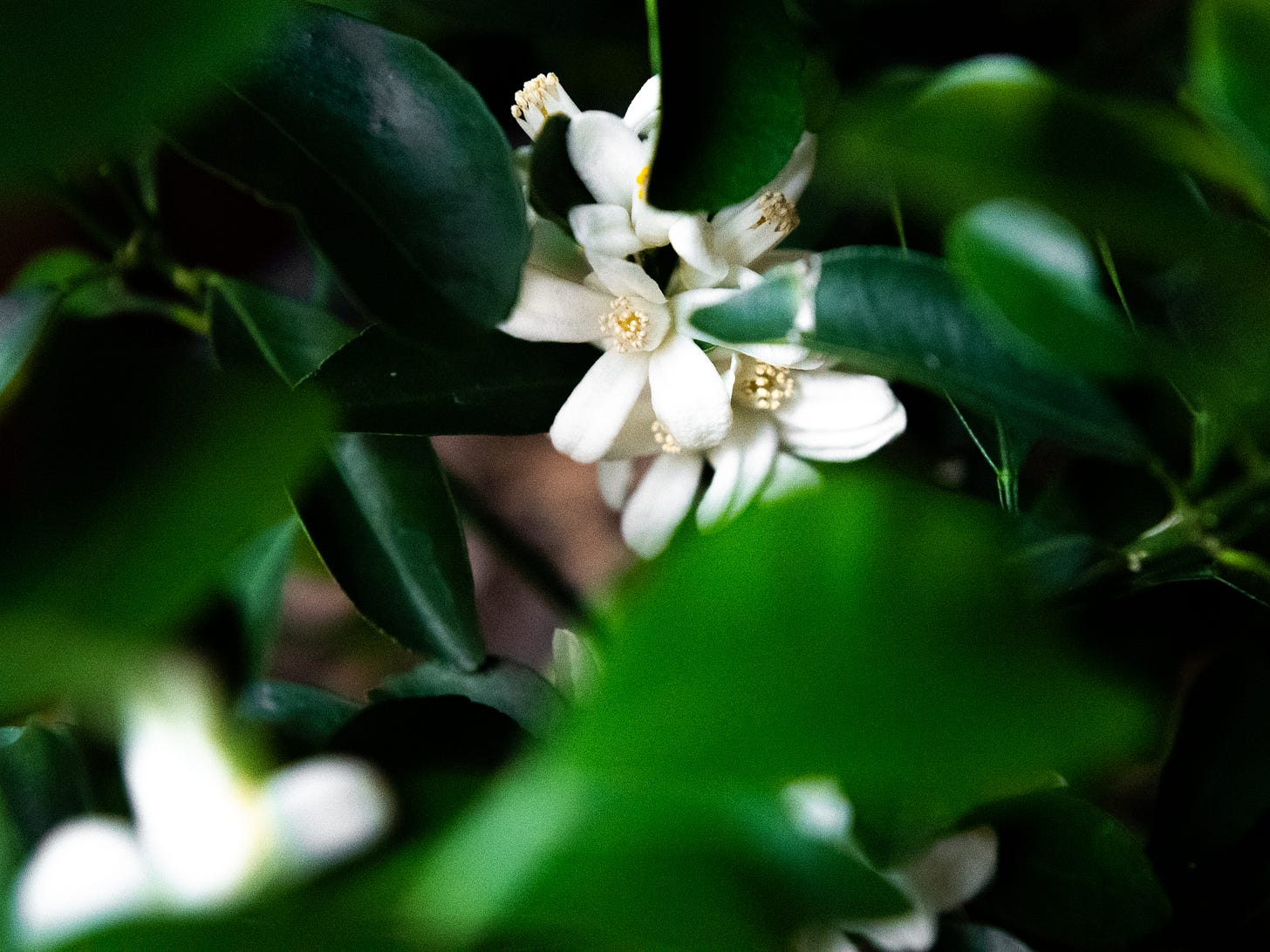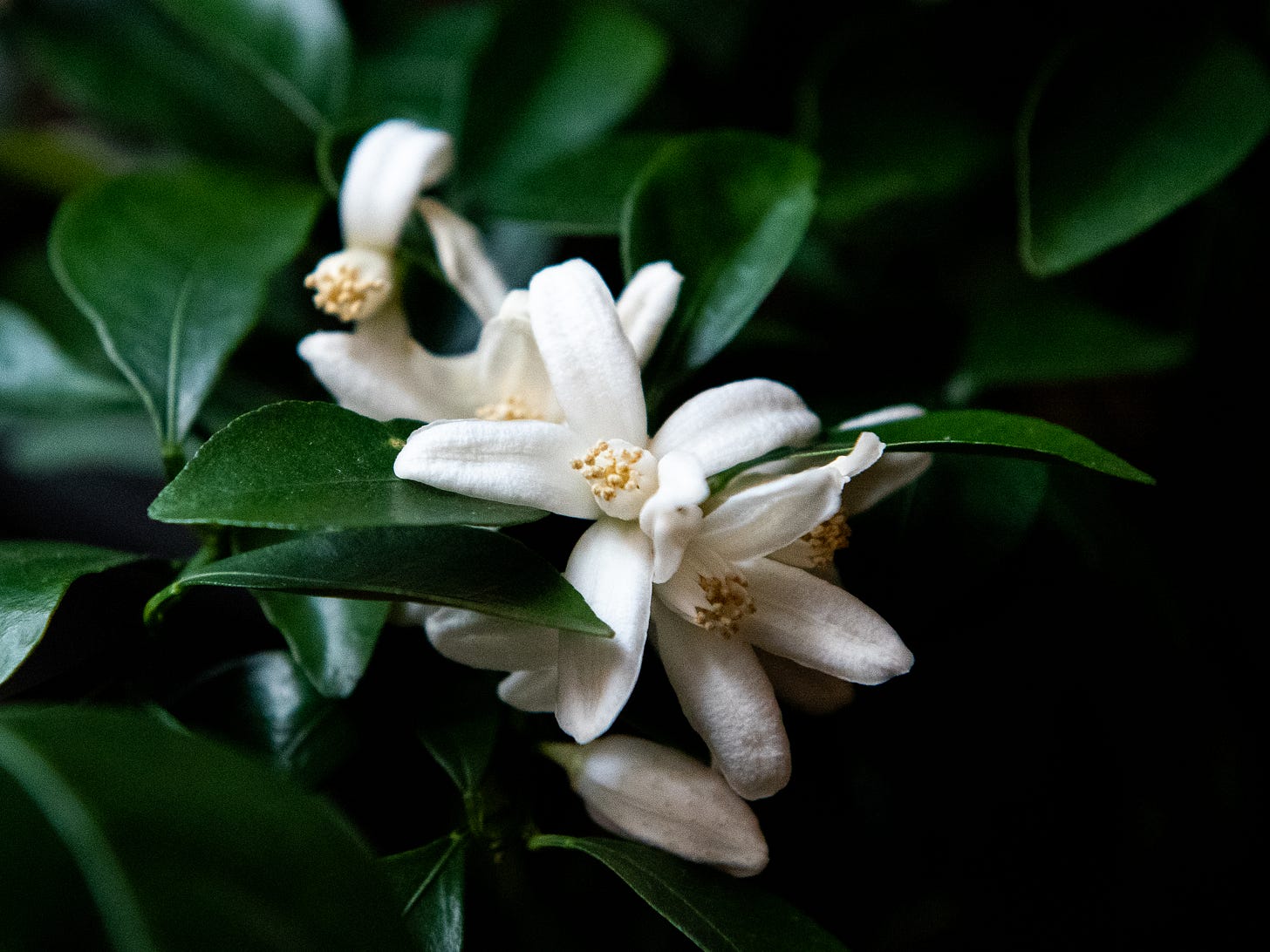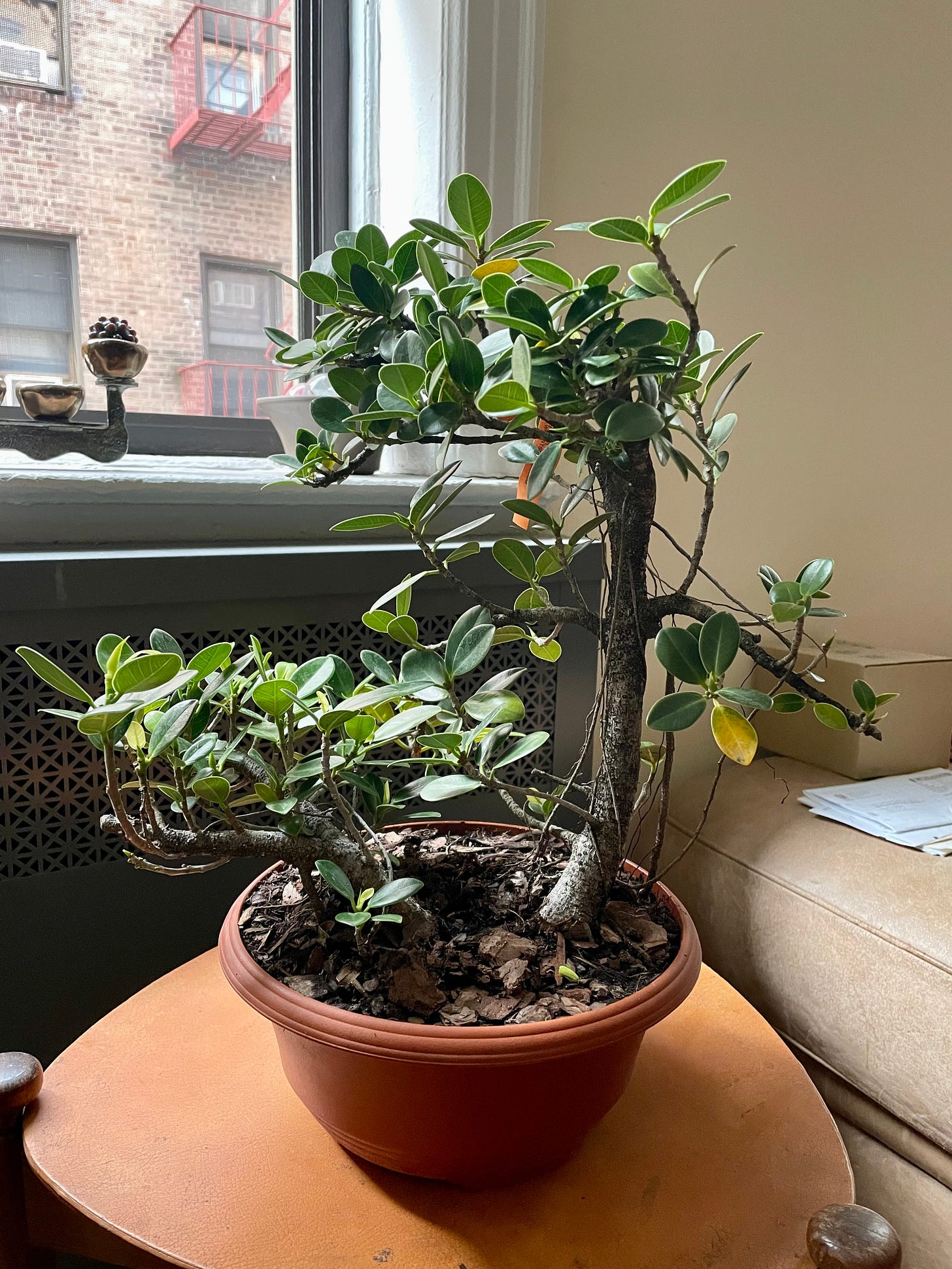With my temperate trees now dormant for the season I’ve been focusing on my indoor species. This includes buying more of them, such as the olive above on the left.
There’s no such thing as an “indoor” tree or bonsai. All trees are outdoor trees. That’s their home! But certain species can survive indoors if you provide the right environmental conditions. For my tropical ficus that means temperatures above 70°F and artificially elevated humidity. These olives on the other hand want as much wind and fresh air as possible, as well as a cold season during the winter; without one they’ll eventually grow exhausted and die.
So here they live on my bedroom windowsill, facing the sky with 12 hours of artificial sunlight. I run hot even in the dead of winter so this window stays open until it’s time to put the air conditioner back in. According to the little hygrometer pictured above, the windowsill consistently runs 10° colder than outdoor temperatures and 10 percentage points drier. Some people may call this inhospitably cold, but I prefer to think of it as encouraging data. With the bulk of my trees offsite I find myself craving ones I can touch and smell every day. Each idle leaf squeeze feels like a stolen moment of therapy.
Look at these blooms from my calamansi tree. They’ve already faded since I took these photos a week ago, but that’s one week of my kitchen smelling like jasmine and passion fruit. Waiting for these buds to open has been my personal 12 days of Christmas. I check on them every morning.
This little fruit is the only one that made it from the last bloom. Once the flowers drop from this round, the tree will tell me how many fruits it can sustain and drop the rest. I’m using this as a metric of the tree’s health in this indoor environment, which in turn will inform how aggressively I can prune it in a few months when it’s time to make stylistic decisions.
The tree has three trunks branching from a single junction; over time this will cause a bulge that bonsai people call reverse taper, which can interfere with the forced perspective of a miniature tree. You correct this by reducing junctions down to just two branches that each fork out to two more. One of the trunks—a third of the tree—will have to go.
When I saw this ficus at a Facebook auction I knew I had to get it. The twin trunk design already looks like a tropical island in miniature, something out of Robinson Crusoe. All the aerial roots will be fun to play with, too. I’ve decided that styling this tree will be my winter project, a bonsai midterm of sorts that will test everything I’ve learned so far.
Here in New York it seems like another lockdown could be days away. This time, I’m prepared.
Tree reading
During WWI, French, German, and British soldiers each painstakingly built hollow replicas of real trees to act as spy posts in the trenches. What? [Smithsonian]
The cuetlaxochitl, or poinsettia, is one of the world’s most popular houseplants. A look into how it took over Christmas. [The Hustle]







